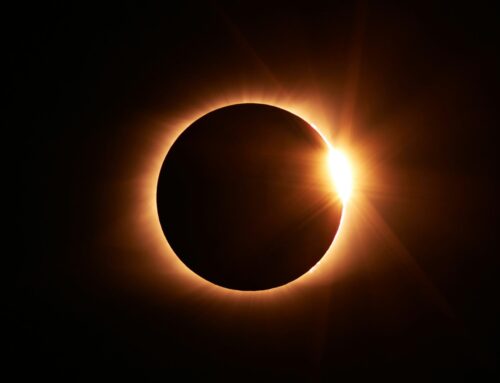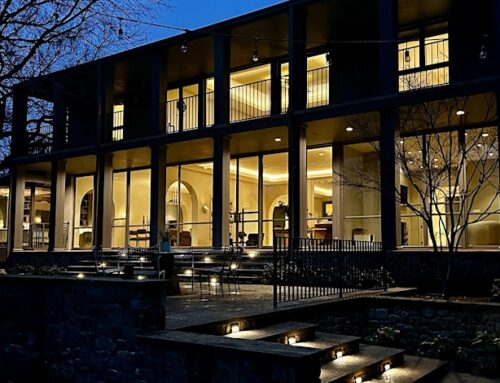Both the neighborhood and the City Plan Commission had their doubts about the project – a 96-acre proposal that required a zoning change for a new regional shopping center.
One attorney, representing a group of homeowners against the change, wondered why anyone would want to build on the site.
“There’s no one living within a mile of the place,” he told the commission.
The commissioners were just as wary, promising to make sure the developer followed through on his plans for the project.
That this meeting took place in April 1961, that the developer was Ray Nasher, and that the project was NorthPark Center just goes to show that the more things change, the more they really do stay the same.
“I don’t think anyone just knew just how big a deal it was at the time,” says Dallas historian Darwin Payne, then a young reporter who was writing about the new mall.
Nasher, then a relatively unknown homebuilder, spent more than four years trying to convince retailers, lenders and regulators that his vision for the cotton fields on part of the old Caruth family farm was more than just self-delusion. The proposed mall wasn’t even the first regional shopping center in the area – Big Town, now all but empty, had opened in 1959, and was the first enclosed mall in the Southwest.
Do not be surprised, however, if you don’t know about NorthPark’s inauspicious debut. There are many things about Preston Hollow that even two-decade residents don’t know, despite their best efforts to keep up.
It’s one thing to know that the area used to be an independent town, or that part of the credit card industry started here with PrestoCharge, a forerunner of MasterCard.
But it’s another to know about NorthPark’s beginnings, that Hillcrest High School was once part of its own rural school district, or any of a dozen other things that have helped make this neighborhood what it is today.
All you have to do is look.
SHOP ‘TIL YOU DROP
How big a deal was NorthPark when it opened? Consider that both of Dallas’ newspapers run special sections for the event, and that stage and movie star Gordon McRae sang “Oh What a Beautiful Morning” from the musical Oklahoma, accompanied by the Richardson High School marching band.
Payne’s story in the Herald reported that as many as 200,000 people might have been there on the first day in August 1965, although 40 years later he thinks that total might have been a bit inflated.
Still, says Payne: “I suppose, if you think about it, that you can say this might have been the beginning of Dallas’ shopping culture.”
The original mall – which was expanded at least twice since then – was L-shaped, running from Neiman Marcus to what is now Dillard’s and then parallel to Central Expressway to what is now Foley’s. Originally, the Dillard’s was a Titche-Goettinger, and the Foley’s was a JCPenney. Three original tenants included Centennial, which had a liquor store inside and outside the mall, a Wyatt’s cafeteria and Toy World.
The other irony about NorthPark? Nasher had difficulty getting many of his original tenants, including Neiman’s, because few retailers were convinced shoppers would travel to a mall on the outskirts of the city rather than stores downtown.
Neiman’s, in fact, had moved to NorthPark from its original suburban location on the east side of Preston Road at Northwest Highway. By the end of the first month or so of business, Payne says he saw a news item that said more people were going to NorthPark on a weekend than were shopping downtown.
HITCH ‘EM UP
Hillcrest High School might seem to be in the middle of the ninth largest city in the United States, but when it was built in 1937, that was far from the case.
The school was located in a cotton field – another portion of the Caruth family farm, in fact, that patriarch W.W. Caruth donated to what was when the Vickery Independent School District.
So it shouldn’t be surprising, depending on whom you talk to and when the person went to school there, that students rode horses to their classes. One ex-student remembers a hitching post. Another says there was a corral, because so many students traveled to school on horseback.
The district was absorbed by DISD in 1952 and apparently never had more than three schools – the high school, originally knows as Hillcrest-Vickery, and elementary schools in the communities of Vickery and Preston Hollow.
And it certainly wasn’t big. Enrollment in 1946 at Hillcrest-Vickery was 140 students, with 13 teachers; the senior class had only 43 students.
And what did students do for fun in the mid-1940s? The 1943 yearbook reports that two of the most popular events were a trip to Bachman Lake and a school picnic at Flagpole Hill near White Rock Lake.
PEACE AT THE DINNER TABLE
In 1970, Ed Lowe had dropped out of the University of Texas and was making ends meet with leather crafting. He was even good at it, selling vests to Neiman’s and upscale boutiques such as the Gazebo.
But he wanted more.
“There was a lot of anger at the time about politics, and the country was pretty polarized, kind of like today,” says Lowe. “So I thought, ‘Why can’t we get these people in the same building – the straights and the hippies – and let them eat together?’ It was pretty idealistic.”
Making the idea seem even more idealistic was that Lowe had no experience in the restaurant business, and, in fact, wanted to combine it with a shop to sell his leatherwork. But somehow it worked, because Lowe’s idea turned out to be the Celebration Restaurant on Lovers Lane, which has been serving fresh vegetables and entrees made from scratch pretty much the same way since March 1971.
Celebration was quite a novelty in 1971, garnering a lot of publicity in print, on the radio and on television (and especially on Channel 13, which did more local programming back then).
After all, Lowe says, how many other restaurants in town in 1971 – at the height of Vietnam – had waiters in blue jeans with long hair and beards serving food in a converted house on Lovers Lane? Lowe did the first menus – in leather, of course – and prices were about $5 for pot roast, fish, spaghetti, meat loaf and baked chicken. It was all-you-can-eat, served family style.
The original restaurant extended only to where the bar area is today. The leather shop took up the room off the bar on the east side before moving to a building next door in 1983. Over the years, Lowe has opened and closed a Celebration in Fort Worth, and moved and closed the leather shop. But his goal has always remained the same.
“Did I ever see we’d still be doing this? Yeah, that’s how I figure it was supposed to be,” Lowe says. “If you take care of your employees and your partners, and you’re determined to make it work, it will.”
CITIES OF THE DEAD
Urban development and redevelopment present a host of challenges. But in Preston Hollow, developers have encountered a very unique challenge, and it’s one that persists today.
As the city has expanded since World War II, many cemeteries – laid out in what were once distant parts of the county – have had to be moved to make way for subdivisions, highways, schools and the like.
This summer, the Dallas Independent School District and the Dallas Archdiocese finally made peace over the district’s desire to buy land that is part of Calvary Hill Cemetery on Lombardy Lane.
Yet the district’s request wasn’t all that odd, since several of the parcels at Calvary had already been moved from there to other sites. The Nun’s Cemetery, also known as the Ursuline Cemetery, had been moved to Calvary in 1981, making it one stop from its original site in East Dallas.
In fact, Preston Hollow cemeteries are rich in Dallas history:
• The LeTot Family Cemetery (at Calvary) is the burial site for French native, veteran of the Crimean War and early Dallas settler Clement Le Tot (1836-1907). Two of his sons are also buried there – Theodore (d. 1884) and Paul (d. 1885).
• The Caruth Pioneer Cemetery (yes, the same family), inside Hillcrest Memorial Park on Northwest Highway, was established in the early 1860s by William and Mattie Caruth on what was then their cotton plantation. The oldest headstone in the cemetery is P.H. Lively (d. 1861).






